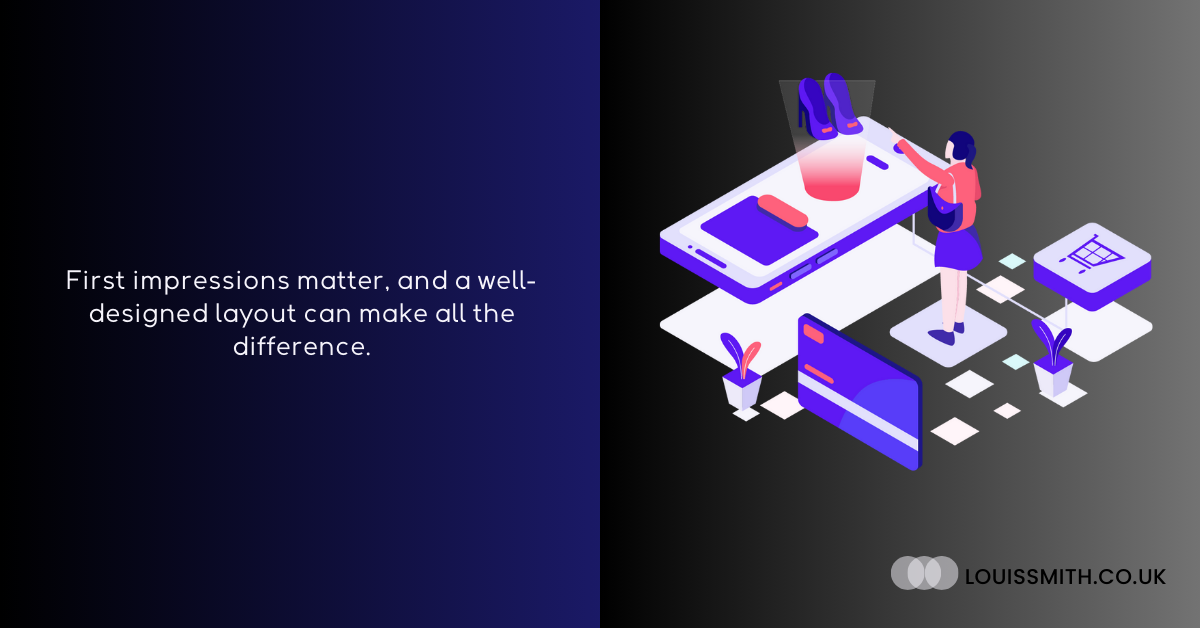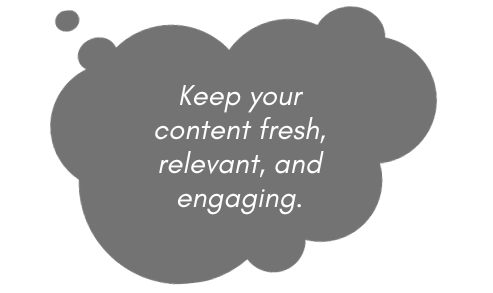12 Tips for Your Ecommerce Website Design: A Friendly Guide
I know how important it is to have a well-designed ecommerce website.
A well-designed and functional ecommerce site can truly make or break a business. It helps to keep customers engaged while also making it easy for them to navigate and make a purchase.
In this article, I’ll share some best practices for a successful ecommerce website design, drawing from my experience and knowledge as well as various insights from industry experts.
One important aspect of ecommerce website design is creating a memorable first impression. This can set the tone for a customer’s entire shopping experience.
Designing an Efficient Ecommerce Website

#1 Consumer-Friendly Interface
Creating a consumer-friendly interface is essential for an ecommerce website’s success. A good user interface (UI) should make online shopping as simple, intuitive, and efficient as possible for the user.
An intuitive interface and appealing design can significantly impact the performance of a website.
One best practice I recommend is to focus on clarity and simplicity. Instead of overwhelming users with excessive visual elements, make the design clean and organised. This will help users quickly find the products they’re interested in and make their shopping experience more enjoyable.
Also, I suggest paying attention to consistency in your website design by following your brand identity. The UI, aesthetics, and design vectors should align with your brand’s patterns and colours.
Consistency across platforms creates a solid consumer-brand relationship, which is crucial in today’s highly competitive ecommerce landscape.
#2 Effective Search and Navigation
It’s important for your visitors to find what they’re looking for quickly.
Building an easy-to-follow, organised menu is key for customers to find products quickly. Ensure your most important categories are part of the primary headings in the menu, and consider using subcategories to provide a more seamless browsing experience.
You should include essential pages like Contact Us, About Us, and My Account in the header. This will help your customers access the information they need more easily without getting lost on your website.
To further enhance the user experience, incorporating search auto-complete is essential. This helps users to find their desired products quickly.
As mentioned by Forbes, one in ten search queries on the web is misspelt, so including this feature can help avoid any confusion and frustration.

A strategically placed and well-designed search bar can significantly enhance the user experience.
If you want to go the extra mile, consider incorporating a site-wide benefits bar into your design. This feature can highlight special offers, free shipping or any other promotion you’re currently running.
It’s an excellent way to keep customers informed of the added value they can get from shopping on your site.
#3 Mobile Responsive Design
With the increasing number of people browsing on their smartphones, you need to make sure your website adjusts to various screen sizes.
One technique I follow is the mobile-first approach. It involves designing the website for smaller screens initially and then scaling it up for larger devices like tablets and desktops. This approach guarantees that your website will serve the needs of all users, regardless of their device.
Another important aspect of mobile responsive design is using intuitive navigation. Make sure that menus and buttons are easy to tap and interact with, even on smaller screens.
Also, pay attention to page load times, as smartphone users tend to have limited patience for slow websites. You can optimise images, minimise server requests and apply caching techniques to improve page speed.
#5 Website Load Speed
The importance of your website loading quickly cannot be overemphasised. In our fast-paced world, people expect websites to load quickly, especially when shopping online.
Google recommends a page load speed of two seconds for an ecommerce site, and it’s smarter to aim for that or even faster.
You might wonder,
‘Why does a website load speed matters so much?’.
Well, let me explain.
Firstly, it greatly affects conversion rates. When pages load in just one second, the average conversion rate is 39%.
However, when the load time increases to two seconds, the conversion rate drops to 34%.
And for every additional second it takes to load your site, you lose 0.3% of your conversion rate.
Optimising your ecommerce website speed not only enhances conversion rates but also maximises your chances of ranking higher on Google.
To improve your website’s load speed, consider implementing some of these practices:
- Optimise images for web use
- Minify and compress CSS, JavaScript, and HTML
- Enable browser caching
- Use a Content Delivery Network (CDN)
- Reduce the number of HTTP requests
- Optimise and improve the web server’s performance
#6 Visually Appealing Layout

When I’m designing an ecommerce website, I always prioritise creating a visually appealing layout. This plays an important role in catching the attention of potential customers and convincing them to explore the site further.
First impressions matter, and a well-designed layout can make all the difference.
One of the keys to achieving a visually appealing layout is to use high-quality images.
This not only showcases the products in the best possible light but also adds to the site’s overall aesthetic. It’s essential to ensure images are crisp, clear, and properly optimised for website load times.
Another important aspect that I always consider is the balance of white space.
By incorporating adequate white space in an ecommerce website design, I can create a clean and uncluttered look that helps emphasise the products and reduces visual noise.
Additionally, appropriate usage of white space enhances the readability of any text, which is particularly important for product descriptions and pricing.
#7 Product Details and Images
In my experience, one of the most important aspects of an ecommerce website design is the presentation of product details and images.
High-quality product images and well-written descriptions can make all the difference in attracting and retaining customers.
The first thing I always recommend is using high-resolution images for your products. This ensures that your products look sharp and enticing, even on large monitors.
For product descriptions, it’s important to strike a balance between being informative and concise.
Remember, your customers want to learn about the key features of your products, but they don’t want to read a novel.
So, I always try to focus on the most important information, using bullet points or tables to present it in an organised and easy-to-read manner.
Another useful practice is to include customer reviews and ratings on your product pages.
They not only help build trust among potential buyers but also give them valuable insights from others who have already purchased the products. A good example of this can be seen on Amazon’s product pages.
See our article on – Ecommerce Product Page SEO and CRO Checklist
#8 Secure User Data and Payments
I always prioritise the security of user data and payments. It’s essential to protect sensitive information and gain the trust of potential customers.

Here are a few best practices that I recommend focusing on: Use secure payment gateways that follow the Payment Card Industry Data Security Standard (PCI DSS) compliance. This ensures that transactions are processed safely. This way, both customers and businesses are protected from fraud or any risks associated with data breaches.
#10 Informative Content
Content comes in different formats and serves various purposes.

Blog
Having a blog page on an ecommerce website can significantly improve customer engagement and trust. Topics can include product guides, how-to articles, and industry news.
Always make sure to keep your content fresh, relevant, and engaging. You can also encourage visitors to leave comments and ask questions to promote discussion and interaction.
Product Videos
Another effective approach to providing informative content is through the use of product videos.
I have found that incorporating product demonstration videos, tutorials, and even customer testimonials can significantly enhance the user experience and lead to higher conversion rates.
By visually showcasing the features and benefits of your products, you can help customers understand the value of what you’re offering.
In addition, these videos can also serve as a helpful resource for customers after they have made a purchase, providing guidance on how to use or maintain the products efficiently.
#11 Easy Checkout Process
Create an easy checkout process for online shoppers.
The first thing you can do here is to incorporate a guest checkout as the default option. This saves time for first-time customers.
This way, they don’t have to go through a lengthy process of creating an account before making a purchase. It also helps reduce cart abandonment and fosters a sense of trust with new buyers.
Next, you can minimise the number of required fields that customers have to fill in during the checkout process.
This can speed up the process and avoid confusion for the shoppers. Include only the essential information. This ensures efficiency and improves the overall user experience.
Clear and intuitive progress indicators are another element you can incorporate into your ecommerce website designs.
These visual cues provide customers with a sense of control and help them understand what step they are at in the checkout process.
It reduces their uncertainty and allows them to complete the process at a faster pace.
#12 After-Sale Service
After-sale service plays an important role in retaining customers and building a strong reputation for the business.
Here are a few key practices I recommend;

Easy and quick delivery
Make your delivery process as easy and flexible as possible. Offer customers the choice to pick up their purchases from a physical store or have them delivered.
Readily available support
Another aspect to focus on is providing timely and efficient support. A great way to achieve this is by incorporating chatbots into the website. Chatbots can offer quick and easy assistance 24/7 without the need for human intervention. Many customers appreciate this.
Clear returns policy
Ensure that you have a clear returns policy. This is best achieved by making the return process straightforward, whether through shipping or in-store returns. An easy-to-navigate policy helps customers trust the company and understand their options.
Read next;
Optimising Ecommerce Checkout Processes




